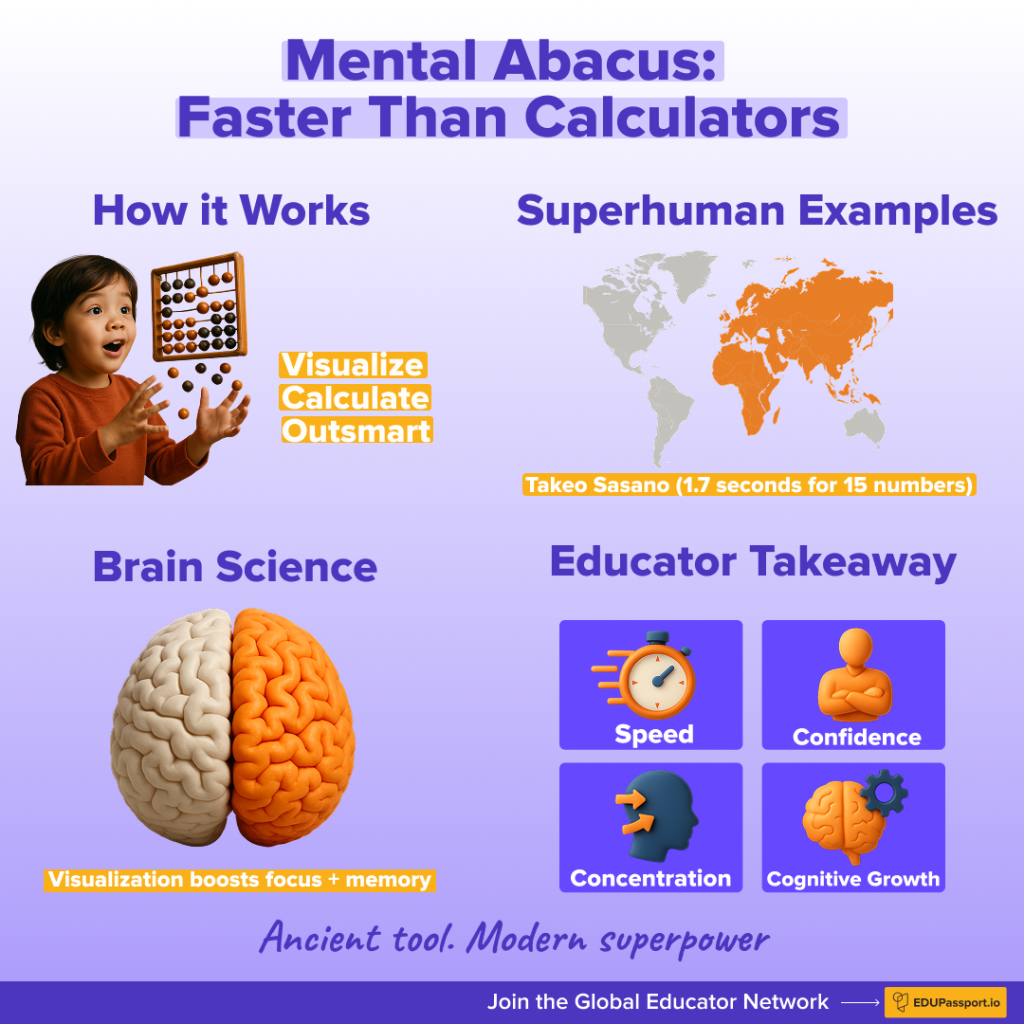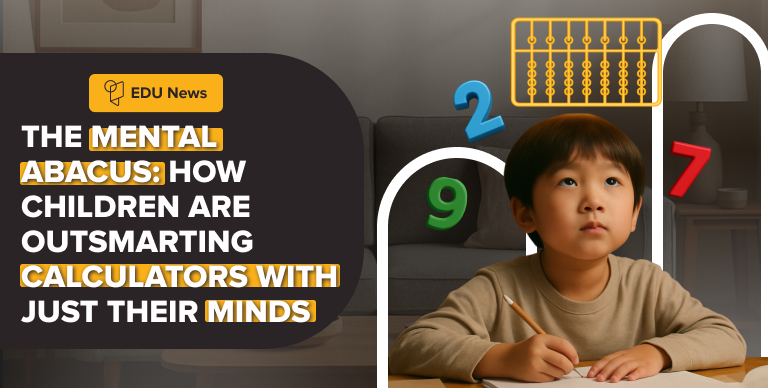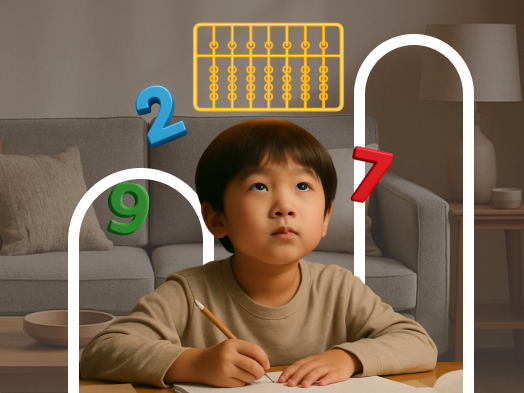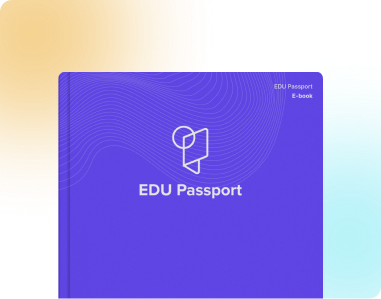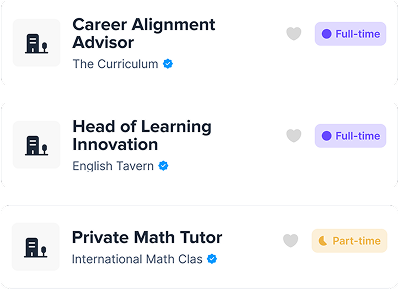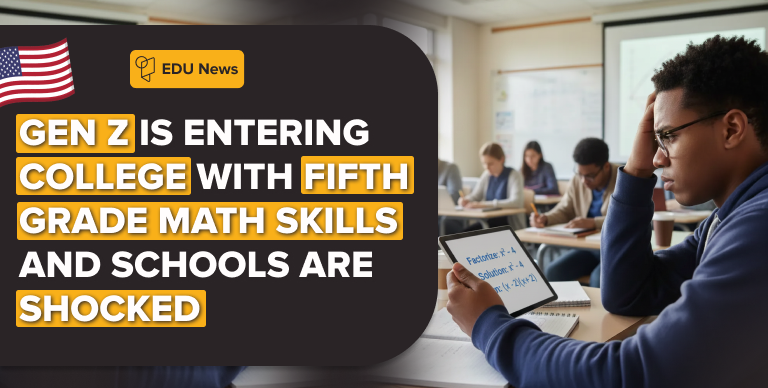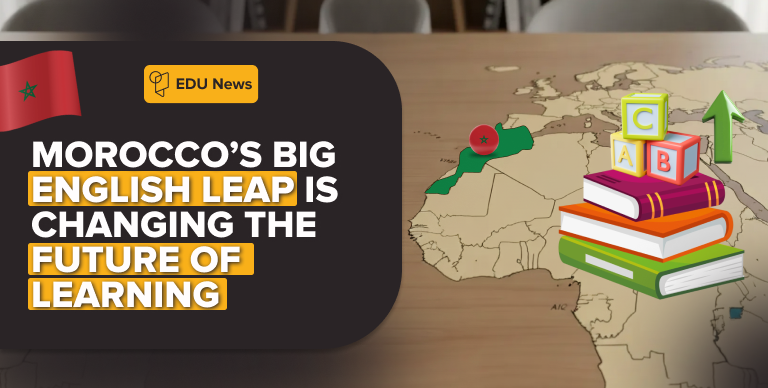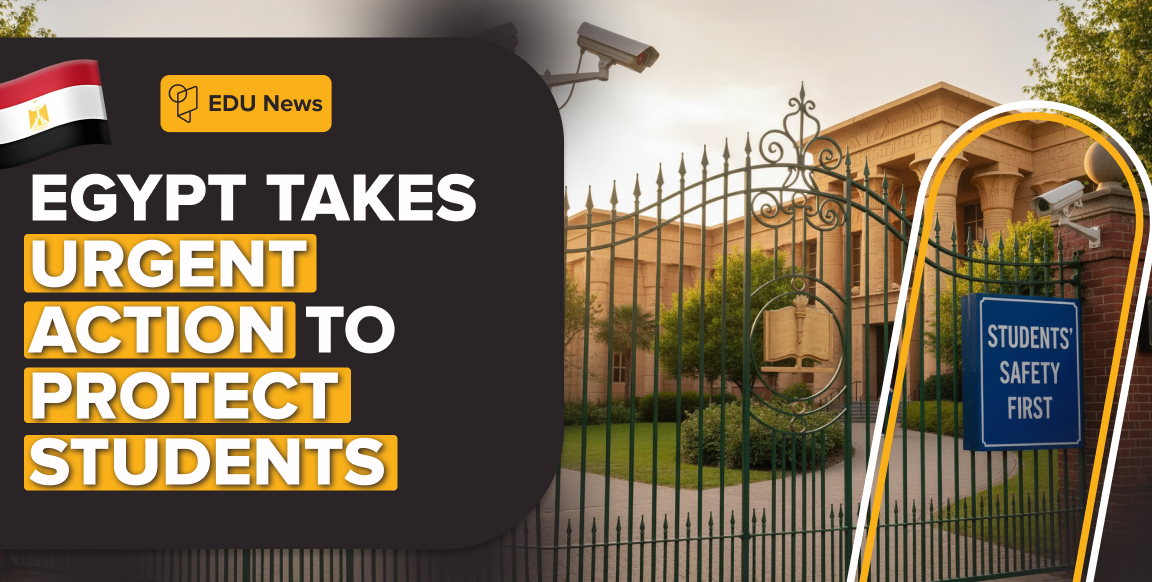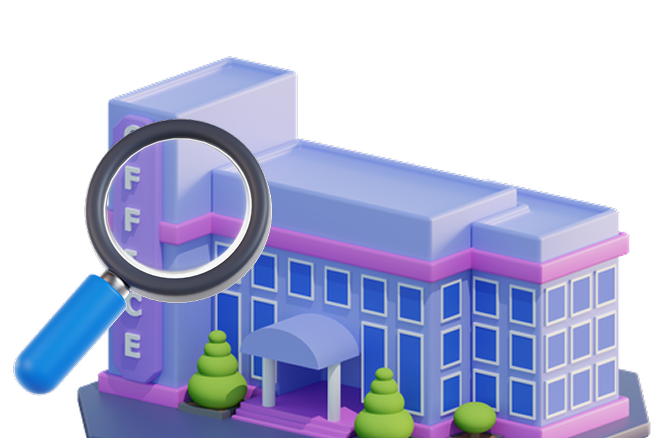Picture this: a child mentally adding ten five-digit numbers in under eight seconds. No calculator, no physical abacus—just imagination. That’s the Mental Abacus, a centuries-old technique that’s still alive and thriving in classrooms across Asia, and now catching the attention of neuroscientists worldwide.
What Is the Mental Abacus?
The Mental Abacus trains learners to visualize an abacus in their minds and move the beads mentally. Unlike rote memorization, this method strengthens:
- Concentration
- Memory
- Processing speed
- Confidence in math
It’s not just about quick arithmetic—it’s about rewiring how the brain handles numbers.
Real-World Examples
At Japan’s legendary Flash Anzan Championship, Takeo Sasano added 15 three-digit numbers in just 1.7 seconds—quicker than entering them into a calculator.
Across China, Singapore, South Korea, Thailand, Malaysia, and Japan, abacus-based mental training is still widely practiced, often as a supplement to formal math education.
What Science Says
Recent brain imaging studies, including research published in Nature Neuroscience, reveal that Mental Abacus users activate the brain’s right hemisphere, the area linked with visualization, memory, and spatial awareness. This contrasts with traditional math, which leans heavily on the left hemisphere.
The result? Stronger focus, faster processing, and improved problem-solving that extends far beyond math class.
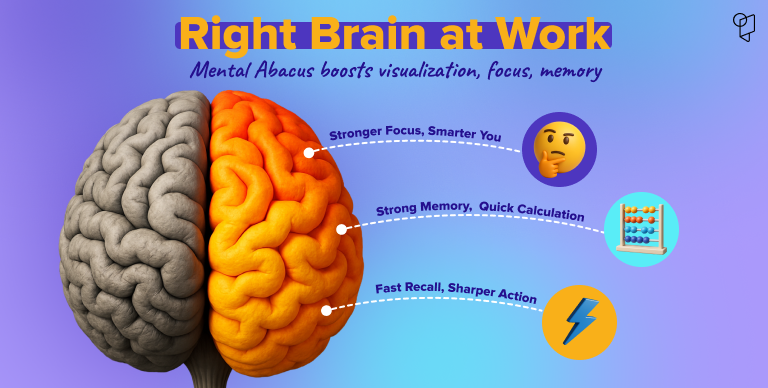
Why It Matters for Educators
The Mental Abacus isn’t only about speed contests. It sparks questions about how schools can tap into visualization for learning.
- Could visualization help students with math anxiety?
- Should abacus training complement traditional math curricula?
- How can such methods inspire confidence in struggling learners?
This ancient method offers a surprisingly modern message: innovation doesn’t always need a screen.
EDU Passport’s Perspective
The future of learning isn’t only digital. Sometimes, ancient practices like the Mental Abacus carry lessons just as transformative. By weaving brain-based strategies into teaching, educators can unlock new pathways to problem-solving and student confidence.
